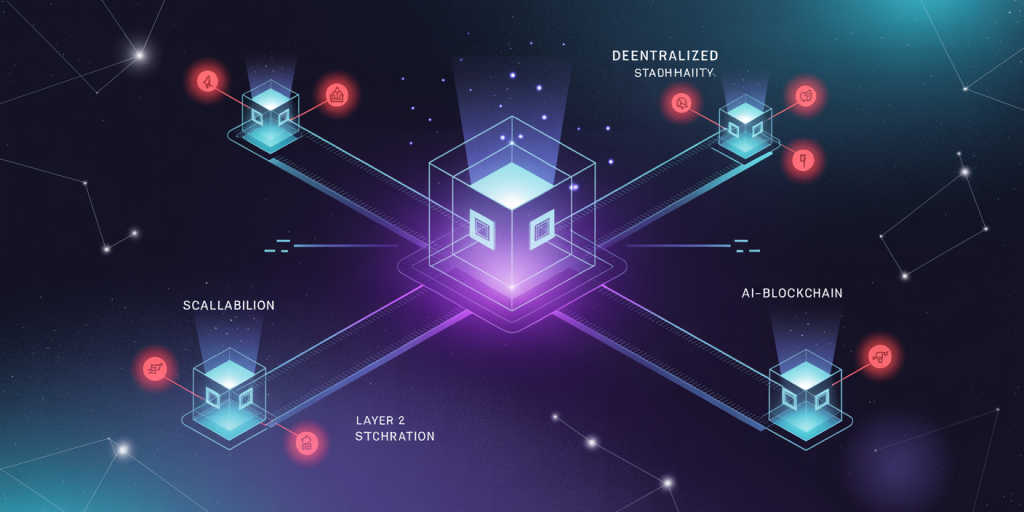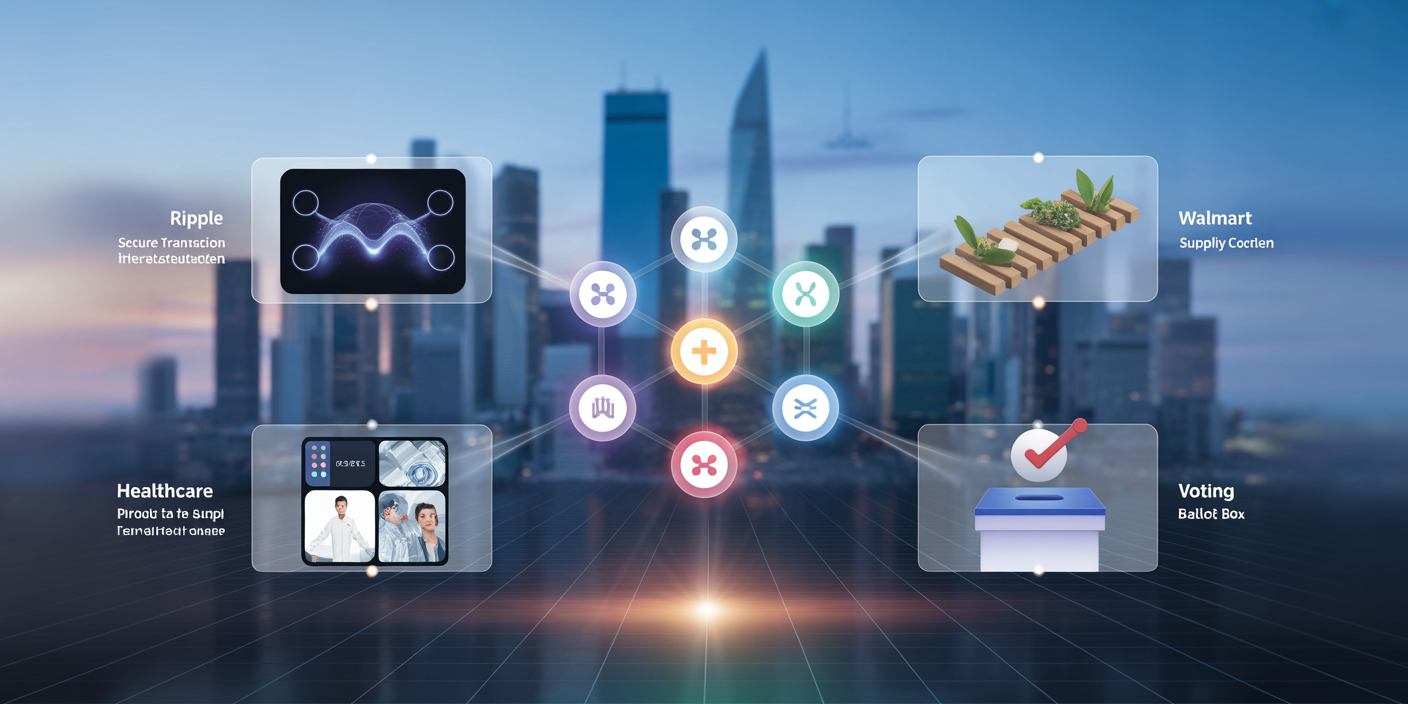In the past decade, the term “blockchain” has become a buzzword frequently associated with cryptocurrencies like Bitcoin. However, blockchain technology extends far beyond digital money, influencing various sectors such as finance, supply chain, healthcare, and even voting systems. Understanding blockchain doesn’t require an advanced technical background; rather, it can be grasped through straightforward concepts and relatable examples. This article aims to demystify blockchain technology by breaking down its core components, explaining how it works, and exploring its practical applications.

What Is Blockchain? Breaking Down the Basics
At its core, blockchain is a decentralized digital ledger that records transactions across multiple computers. Unlike traditional databases controlled by a central authority, the blockchain operates on a distributed network where every participant holds an identical copy of the ledger. This unique design ensures transparency, security, and resistance to tampering.

To illustrate, imagine a Google spreadsheet shared among a group of people worldwide, where everyone can add data but no single person controls it. Every time someone updates the sheet, all other copies sync automatically, making the process transparent and preventing data fraud or manipulation. Similarly, blockchain groups records (“blocks”) and links them in a chronological sequence (“chain”). Once added, a block cannot be altered without changing all subsequent blocks, making fraudulent edits virtually impossible.
Statistically, the global blockchain technology market is projected to grow from $7 billion in 2022 to over $163 billion by 2029, according to data from Fortune Business Insights, emphasizing the increasing relevance of this technology.
How Blockchain Works: A Step-by-Step Explanation
Understanding how blockchain functions requires recognizing its key components: blocks, nodes, and cryptography. Each block contains a list of transactions, a timestamp, and a unique code called a hash. The hash, generated through cryptographic algorithms, acts like a digital fingerprint that identifies the block and links it securely to the previous one.
When a new transaction occurs, it is broadcasted to the network of participating nodes (computers or devices). These nodes validate the transaction using consensus mechanisms — protocols that ensure all copies of the blockchain are consistent. Popular consensus algorithms include Proof of Work (PoW) and Proof of Stake (PoS).
For example, Bitcoin uses PoW, in which specialized nodes called miners solve complex mathematical puzzles to validate transactions and add new blocks. Though energy-intensive, this ensures security by making it costly to manipulate the blockchain. In comparison, PoS selects validators based on the number of coins they hold and are willing to “stake,” making it more energy-efficient.
| Consensus Mechanism | Description | Energy Use | Popular Use Case |
|---|---|---|---|
| Proof of Work (PoW) | Mining-based validation | High | Bitcoin, Ethereum (pre-2.0) |
| Proof of Stake (PoS) | Stake-based validator selection | Low | Ethereum 2.0, Cardano |
| Delegated PoS | Delegates chosen by voting | Low | EOS, Tron |
The chain’s immutability is upheld because changing one block’s data changes its hash, breaking the link and alerting the network to potential tampering. This decentralized verification process distributes trust across the network, eliminating reliance on intermediaries.
Real-World Applications of Blockchain
While blockchain is best known for underpinning cryptocurrencies, its practical uses span numerous industries.
Finance and Banking
The banking sector is one of the earliest adopters of blockchain technology. Traditional banking systems are plagued with delays, high costs, and risks associated with manual reconciliation. Blockchain enables faster, more transparent transactions, increasing operational efficiency.
For example, cross-border payments are notoriously slow, often taking days and incurring high fees. Ripple, a blockchain-based payment network, facilitates near-instant settlement between financial institutions worldwide at significantly lower costs. According to Ripple’s website, transactions using their network can settle in under 4 seconds, compared to the typical 3-5 days using SWIFT.
Supply Chain Management
Blockchain’s transparency and traceability are invaluable in supply chain operations. Companies can track goods in real time, ensuring authenticity and reducing fraud.
Walmart, a global retail giant, leverages blockchain to monitor food products along the supply chain. Using IBM’s Food Trust blockchain platform, Walmart can trace the source of produce like leafy greens back to the farm within seconds, instead of days. This rapid traceability proved crucial in identifying contaminated food sources during outbreaks, enhancing consumer safety.
Healthcare
In healthcare, secure sharing of medical records remains a challenge due to privacy concerns and interoperability issues. Blockchain offers a solution by providing patients control over their data while allowing authorized providers secure access.
Projects like Medicalchain implement blockchain-based electronic health records (EHRs) where patients authorize access to their data. This approach enhances privacy and ensures data integrity, supporting better clinical outcomes.
Voting Systems
The democratic process can benefit from blockchain’s transparency. By recording votes on a tamper-proof ledger, blockchain-based voting platforms can reduce election fraud and increase voter confidence.
During Estonia’s 2019 local elections, blockchain technology finessed their e-voting system, making it more transparent and secure. While still experimental, blockchain voting holds the promise of verifiable, auditable elections globally.
Benefits and Challenges of Blockchain Technology
Key Benefits
One primary advantage of blockchain is decentralization. By distributing data across multiple nodes, it avoids single points of failure, increasing system robustness. Additionally, blockchain’s transparency builds trust among participants as all transactions are visible and verifiable.
Security is another benefit, with cryptographic principles ensuring data integrity and resistance to hacking. Furthermore, blockchain automates processes through smart contracts — self-executing contracts with the terms embedded in code — reducing paperwork and errors.
Challenges to Consider
Despite significant advantages, blockchain faces obstacles to widespread adoption. Scalability remains a concern; for instance, Bitcoin handles about 7 transactions per second versus Visa’s 1,700+ transactions per second, limiting real-world applicability for large-scale use without technological improvements.
Regulatory uncertainty also complicates blockchain deployment. Since it disrupts traditional centralized systems, governments worldwide are continually adapting policies to protect consumers while fostering innovation.
Furthermore, blockchain’s decentralized nature introduces complexities such as irreversible transactions — a wrongly sent payment cannot be easily recovered — demanding user caution.
| Aspect | Blockchain Advantage | Limitation |
|---|---|---|
| Decentralization | No single control point | Difficult governance and updates |
| Transparency | All transactions publicly visible | Potential privacy concerns |
| Security | Resistant to hacking and fraud | Vulnerable to 51% attacks (network control) |
| Scalability | Secure but slow transaction processing | Limited throughput compared to centralized systems |
Future Perspectives: Where Is Blockchain Heading?
The future of blockchain technology is promising yet evolving. Emerging developments aim to overcome current limitations and expand blockchain’s reach.
Layer 2 solutions like the Lightning Network for Bitcoin or rollups for Ethereum increase transaction speed by handling processes off-chain before settling final results on the main blockchain. This approach addresses scalability while maintaining security.
Moreover, hybrid blockchains combining public and private architectures offer businesses flexibility. Enterprises can control access without sacrificing blockchain benefits such as auditability.
Another exciting frontier is blockchain integration with the Internet of Things (IoT). Devices equipped with blockchain-enabled identities can communicate securely and autonomously, enhancing automation and security in smart cities and industries.
Governments and regulators worldwide are increasingly engaging with blockchain technology. For example, the European Union’s proposed Markets in Crypto-assets (MiCA) regulation aims to create a unified framework, promoting innovation while safeguarding stakeholders.
Artificial intelligence (AI) and blockchain convergence also holds potential, enabling decentralized data marketplaces where AI models can train securely on distributed data without compromising privacy.
In economics, decentralized finance (DeFi) platforms continue to innovate savings, lending, and investment, bypassing traditional financial intermediaries. As of 2023, DeFi holds over $50 billion in assets locked, illustrating substantial user trust and interest.
Finally, education and awareness are pivotal. As blockchain literacy improves, more individuals and institutions will embrace its transformative potential.
Blockchain technology represents a paradigm shift, offering transparency, security, and efficiency across numerous sectors. Understanding its mechanics — from blocks and chains to consensus algorithms — reveals why it’s much more than just the backbone of cryptocurrencies. Through practical implementations in finance, healthcare, supply chains, and voting, blockchain proves its versatility. While challenges like scalability and regulation remain, innovations are paving the way for a blockchain-powered future that redefines trust in the digital age.


Deixe um comentário